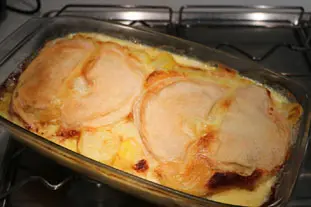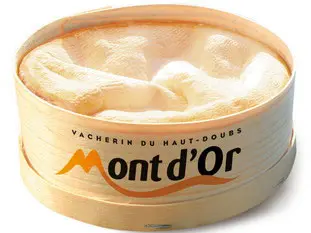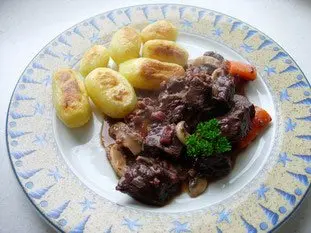The blog of cooking-ez.com
Markers in cooking

When it comes to cooking, there is only one real rule, and that is that there are no rules!
By that I mean that everything is possible, everything can be combined, everything or almost everything can go with everything, but you have to like it, you have to find it good.
I have friends who regularly make brown sugar pasta, just the idea makes me jump up and down, but they love it, I respect that, tastes are not debatable!
That's why the dogmas, or the canons of cooking can be shaken up when you cook and at any time, in other words you make a recipe of this and you want to put that in it? But why not, nothing should stop you, if you like it.
By that I mean that everything is possible, everything can be combined, everything or almost everything can go with everything, but you have to like it, you have to find it good.
I have friends who regularly make brown sugar pasta, just the idea makes me jump up and down, but they love it, I respect that, tastes are not debatable!
That's why the dogmas, or the canons of cooking can be shaken up when you cook and at any time, in other words you make a recipe of this and you want to put that in it? But why not, nothing should stop you, if you like it.
7,071 16 5
Last modified on: July 3rd 2021
Keywords for this post:CookingTasteMarkersEssentialMarkers in cooking
Of course, if you deviate from the basics of a typical recipe, it would be better not to call it by its original name, and especially not to publish it anywhere, as you might get a lot of flak if some guardians of the recipe in question spot you.
Basically, it's potatoes slices cooked in water, put in a gratin dish with a mix of onion, lardons and dry white wine, from Savoie if possible, cooked separately, the whole thing is topped with fresh cream and covered with half-reblochons before being put to gratinate.
A pure winter delight.
All this to tell you that we can, with a certain look, define what the cooks/pastry cooks call the markers of a recipe, that is to say the 2, 3 or 4 or more, indispensable tastes to deserve the name of the original recipe, even if it is completely revisited.
Let's go back to our tartiflette, its markers are: Potato, onion, lardon, Reblochon (or even cream?)
A sweet example, the Black forest cake: chocolate, cream, cherry, kirsch
Tarte tatin: apples, caramel, acidulous
Carbonnade: Beef, beer
Bœuf bourguignon: Beef, red wine, carrots
etc. etc.
You can see that it's sometimes quite simple to determine, sometimes a bit more tricky ( cassoulet?), but it allows you to target a recipe you want to revisit while keeping its tastes and therefore its spirit, and at the same time to allow yourself one or two liberties by changing 1 or 2 markers. I say 1 or 2, because beyond that you risk doing something completely different, which is not dramatic either, but it will probably not deserve the original name.
To sum up: The markers of a recipe, i.e. its essential basic tastes that characterize it, allow you to know if, when revisiting or adapting it, you are still in the spirit of it, or if you are doing something very different, which may not fit with the original name. But who cares if you like it...

Basically, it's potatoes slices cooked in water, put in a gratin dish with a mix of onion, lardons and dry white wine, from Savoie if possible, cooked separately, the whole thing is topped with fresh cream and covered with half-reblochons before being put to gratinate.
A pure winter delight.

All this to tell you that we can, with a certain look, define what the cooks/pastry cooks call the markers of a recipe, that is to say the 2, 3 or 4 or more, indispensable tastes to deserve the name of the original recipe, even if it is completely revisited.
Let's go back to our tartiflette, its markers are: Potato, onion, lardon, Reblochon (or even cream?)
A sweet example, the Black forest cake: chocolate, cream, cherry, kirsch
Tarte tatin: apples, caramel, acidulous
Carbonnade: Beef, beer
Bœuf bourguignon: Beef, red wine, carrots

etc. etc.
You can see that it's sometimes quite simple to determine, sometimes a bit more tricky ( cassoulet?), but it allows you to target a recipe you want to revisit while keeping its tastes and therefore its spirit, and at the same time to allow yourself one or two liberties by changing 1 or 2 markers. I say 1 or 2, because beyond that you risk doing something completely different, which is not dramatic either, but it will probably not deserve the original name.
To sum up: The markers of a recipe, i.e. its essential basic tastes that characterize it, allow you to know if, when revisiting or adapting it, you are still in the spirit of it, or if you are doing something very different, which may not fit with the original name. But who cares if you like it...
Lasts posts
Wipe meats and fish before cooking
When you want to cook meat or fish, there's a very simple yet very important step to take before you even start: It's to dry, or wipe, each side of the meat or fish, sometimes called "dabbing" or "sponging". But why? And how? Let me explain.1,4775 April 14th 2024
Toss the salad
When you've finished preparing a salad, green or otherwise, it's usually time to add the dressing and toss. It's often said to "toss the salad", which means to season and mix. Is it easy? Not so easy...2,8225 March 8th 2024
Half milk, half cream
In a multitude of recipes, savoury or sweet, milk is used as the main ingredient, or at least as the main liquid ingredient. Milk is used instead of water, for example, because milk contains a proportion of fat, which adds roundness and softness to the recipe. This mellowness is very pleasant on...2,675 February 27th 2024
Cutting soft cheeses
As you may have already noticed, when you have to use a "soft" cheese in a recipe - their exact name is "soft cheese" - such as Camembert, Munster or Mont d'or, it's not easy to make anything other than thick slices.2,7955 February 20th 2024
It's spinning too fast!
When you need to grate or slice vegetables, you generally use an electric machine that does all the work: a food processor, a mixer with a "slicer" extension or similar. Are these machines really suitable? Generally speaking, yes of course, but there's one criterion that often poses a problem,...5,7565 November 12th 2023
Other pages you may also like
Candied fruits: don't get ripped off
Do you like candied fruit? You might like to nibble a handful or add it to a recipe, like a classic fruit cake or delicious Italian specialities like panettone or sicilian epiphany pie.53K 24.2 June 21th 2017
The right weight of pastry for a pie
Let's try to solve a thorny problem: How much dough will I need when I make my next pie? You're planning to make a pie, you're going to use your favourite mould or circle, but how much pastry will you need to fill it completely with a well spread pastry, without being too thin, or on the contrary...58K4.3 March 20th 2020
Fruits which can ruin your jelly
There are many ways of making a fruit mousse, but one of the simplest is to prepare a fruit jelly (basically a fresh fruit coulis with gelatine) and then mix this jelly before it sets completely with whipped cream. The result is perfect for filling a charlotte, for example. But do beware;...68K4.0 March 6th 2013
What is the difference between bakery and patisserie?
This is a question that you may well have asked yourself and which I will attempt to answer. In France the two trades of "boulangerie" (bakery) and "pâtisserie" (patisserie and confectionery) have always been quite distinct, but where exactly do the boundaries lie? .119K 14.1 February 7th 2017
The beautiful story of the croissants
As you may have already noticed, cooking, baking and pastry-making are full of stories or legends, usually very romantic, about this or that product or recipe. This is often the case for named recipes, for example tarte tatin, peach melba, paris-brest and many others, but it also applies to very...13K5 October 10th 2018
Follow this page
If you are interested in this page, you can "follow" it, by entering your email address here. You will then receive a notification immediately each time the page is modified or a new comment is added. Please note that you will need to confirm this following.
Note: We'll never share your e-mail address with anyone else.
Alternatively: you can subscribe to the mailing list of cooling-ez.com , you will receive a e-mail for each new recipe published on the site.









